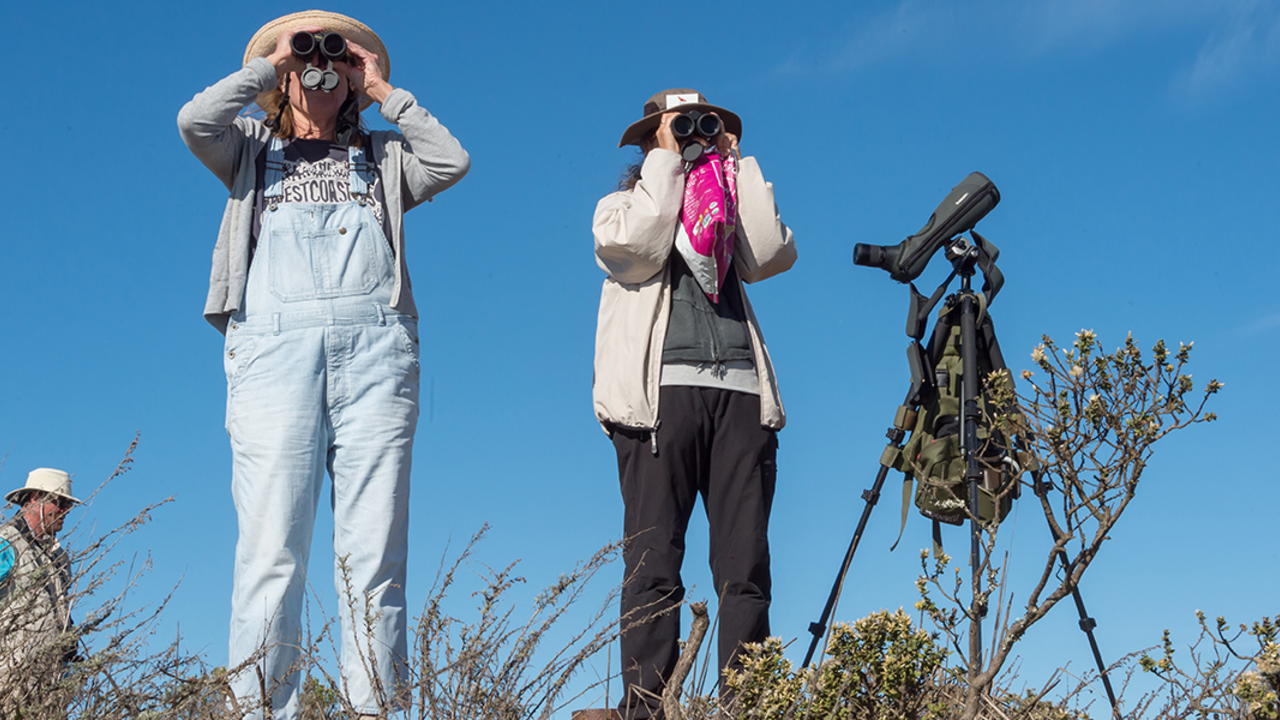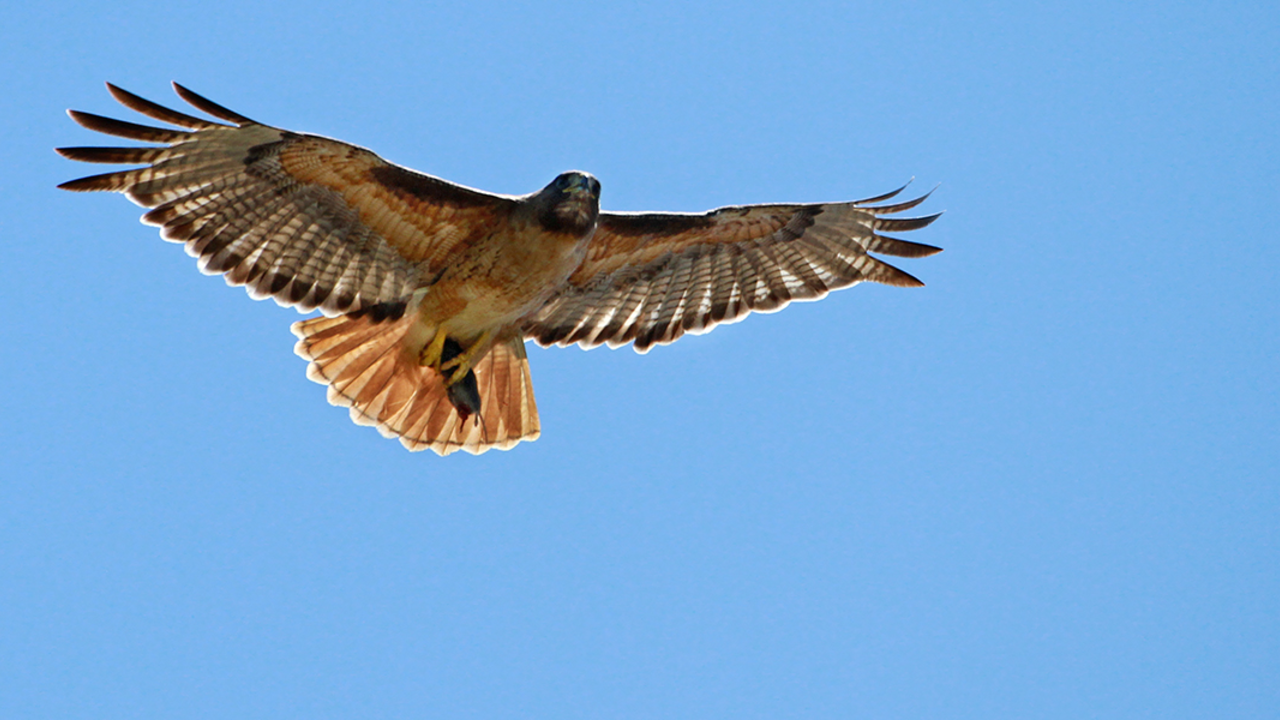Identifying flying objects: Tracking the action from Hawk Hill in the Marin Headlands

Alison Taggart-Barone / National Park Service
It’s a bird! It’s a plane! It’s a raptor! Raptor is the catch-all term used to describe birds of prey. Since 1984, the Golden Gate Raptor Observatory (GGRO), a program of the Parks Conservancy in cooperation with the NPS, has been tracking the migration of tens of thousands of hawks, eagles, falcons, and vultures through the Golden Gate. On Hawk Hill in the Marin Headlands, the most prolific bird of prey migration site in the Pacific Flyway, raptors use the updrafts off the area’s hilly terrain for their migration south for the winter.
Early December marks the end of the fall migration period for raptors through the Bay Area—for the 2022 season, the season will end on Dec. 4. Observing raptors in the air, you can differentiate them by noting their plumage, the lift of their tails, and the length and shape of their wings. Buteos, soaring hawks, have long, broad wings, and short tails; Accipiters have short, rounded wings, and long, rudder-like tails; Falcons are fast flying, with long, narrow, pointed wings.
Trained volunteer hawkwatchers spend 5 hours per day spotting birds from the hill, meticulously noting what they observe. From Hawk Hill, the views stretch all the way to Alcatraz Island in the east to the towers of the Golden Gate Bridge over the Pacific Ocean, to the peak of Mount Tamalpais in the north. The high hills in the area can provide slopes and updrafts for southward migrating raptors, aiding them in their flight.

Hawkwatchers see it all and work on a quadrant system, allowing each volunteer to focus on a particular piece of the sky for a half hour at a time. All sightings are relayed to one central data keeper. Most commonly, they see Turkey Vultures, Red-tailed Hawks, and Cooper’s and Sharp-shinned Hawks, also known as Accipiters. The data keeper puts the minute-by-minute sightings into a tablet that transmits live to the Parks Conservancy’s GGRO website, so you can “read” the migration from your own computer as the birds are flying over Hawk Hill.
GGRO’s long-term migration studies, hawk watching, and banding allow us to learn more details about the stressors and impacts on Pacific Flyway raptor populations. The two studies provide data to track raptor ecology, health and physiology, and the conservation status of 19 species of birds of prey.
"It's a well-worn statement that raptors are environmental barometers," said GGRO Director Allen Fish. "The wonderful thing is raptors do have some ability to represent the health of a local environment. It's a good reason to watch raptors and keep track of their numbers."
Come out to Hawk Hill and take a look. Check out the Daily Hawk Count and summaries to learn more about what the days are like on Hawk Hill.


